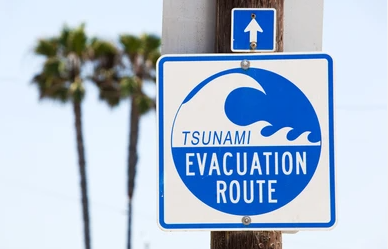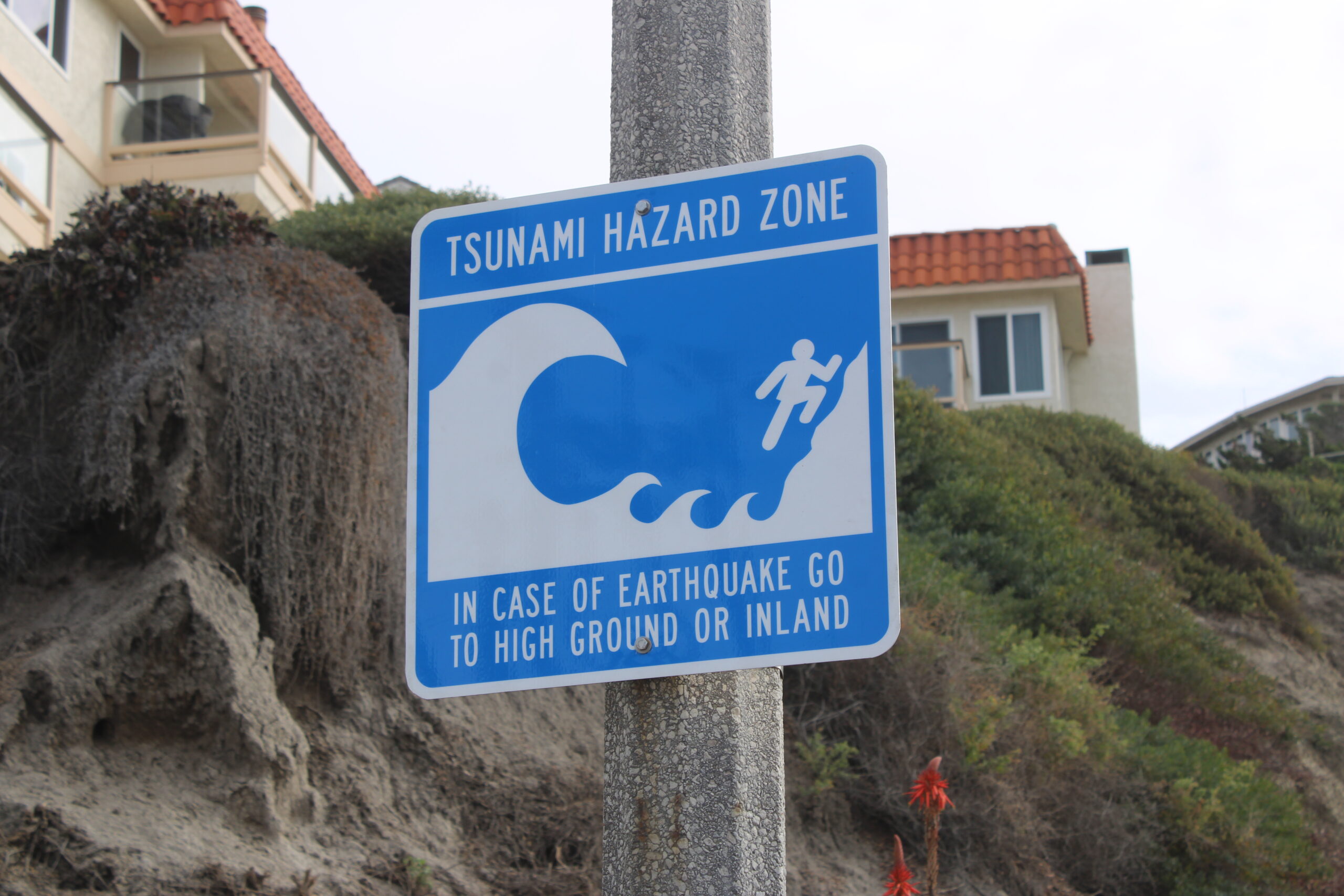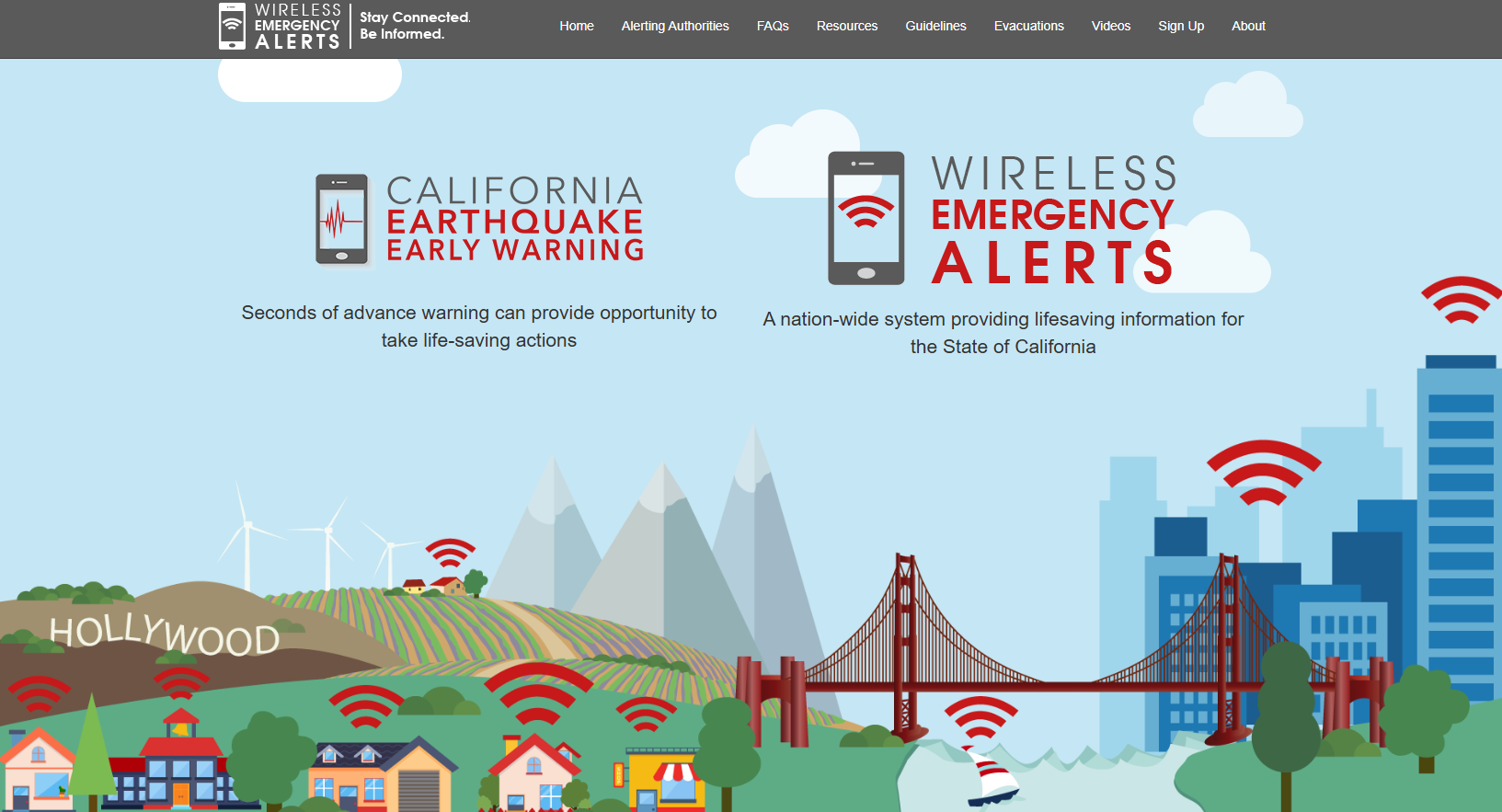The California Governor’s Office of Emergency Services, Earthquake, Tsunami and Volcano Program is continuously researching, learning, and collaborating with science, industry, and academic experts to develop and confirm the latest, best available knowledge base to help make California’s residents and visitors safer in the event of tsunamic activity. By mapping tsunami hazard areas, providing assistance in response and evacuation planning, implementing outreach, education and warning signage at the coast, as well as determining ways to improve preparedness and resilience of California’s ports and harbors, our staff strives to ensure everyone on the coast remains safe before, during and after the next tsunami.
About Tsunamis
A tsunami is a series of large ocean waves often generated by large undersea earthquakes, landslides or volcanic eruptions. When the waves enter shallow depths near a coastline, they may rise to several feet or, in rare cases, tens of feet. If you are on a beach or in low coastal areas a tsunami could arrive within minutes after a severe earthquake. A tsunami’s danger period can continue for many hours after a major earthquake. Tsunamis can occur during any season and at any time, day or night.![]()
Am I at Risk?
Tsunamis can affect any part of the coast of California. Impacts to regions will depend on the location and size of the earthquake generating a tsunami and the configuration of the coastline locally. If the origin was nearby, time to take action is short. If the tsunami originated across the ocean, time to respond will be longer.
Knowing if you live, work, shop, vacation, or drop your children off for school in an area that could be impacted by a tsunami is the first step you can take to reducing your risk of injury or decreasing your property damage from the tsunami. As long as you have an address, you can find out if you are at risk by visiting Cal OES’s “My Hazards”opens in a new window and entering your address. ![]()
Tsunami Warnings
Most tsunamis are not one big breaking wave that overruns the shore. They are usually a series of waves behaving similar to a rapidly rising high tide that can continue repeatedly over many hours, and even days. ![]()
Be Prepared, Not Scared!
Preparedness refers to activities we do prior to a tsunami to be ready to respond to and recover from significant tsunamis. When it comes to tsunamis, there are simple things you can do to improve the chances you and your loved ones will survive and recover. Anything you do today will be like making a deposit in your survivability savings account for withdrawal in tough times.
![]()
Debris and Exposure
When a tsunami strikes, it doesn’t just bring water, it can also carry massive amounts of debris. This includes everything from small building materials to large objects like cars, boats, and shipping containers. These floating items can damage infrastructure, block evacuation routes, and greatly increase cleanup costs.
![]()
Maritime Guidance and Recovery
Cal OES has prepared an extensive resource to assist boaters in the event of a tsunami. See the Tsunami Maritime Guidanceopens in a new window site for more information.![]()
Understanding Tsunami Signage
Most emergency management agencies responsible for areas along the California coast went through a vigorous process to identify tsunami hazard zones and then placed signs in specific areas to delineate the perimeter of the inundation zone, evacuation routes and appropriate action to be taken by individuals when an earthquake occurs.![]()

California’s Tsunami Stories
Some text here…
![]()
Get Connected
and
Other Resources
![]()







